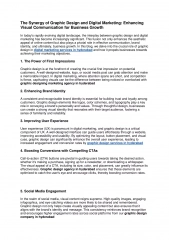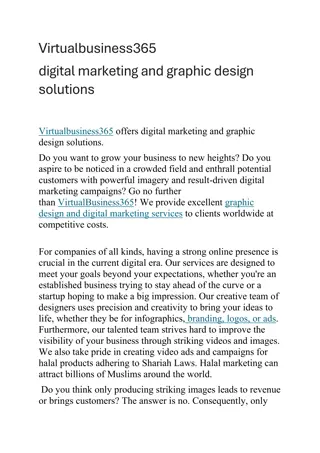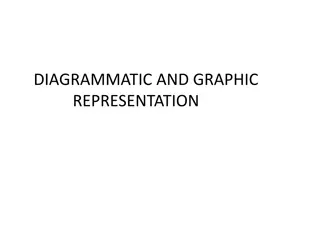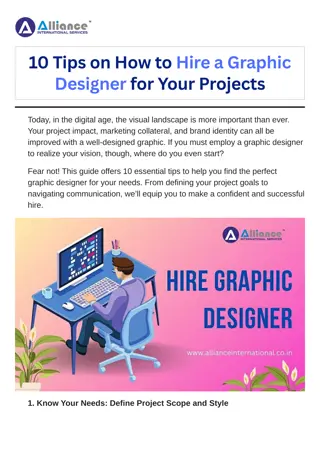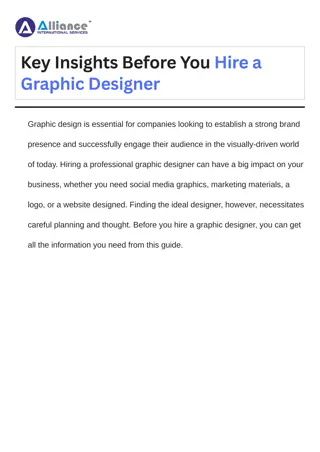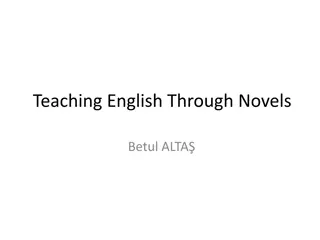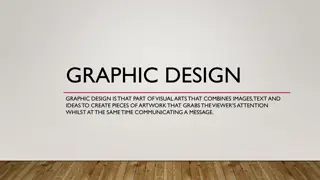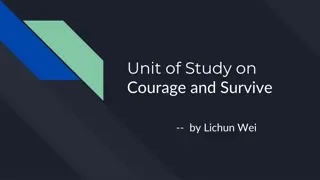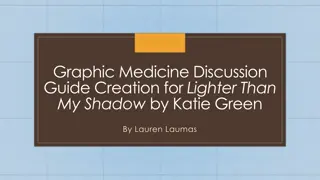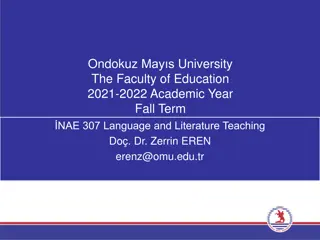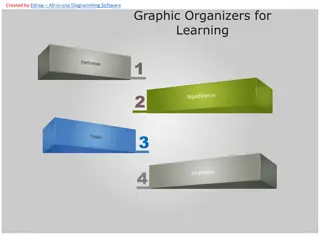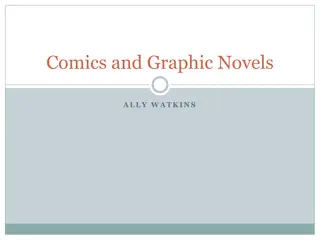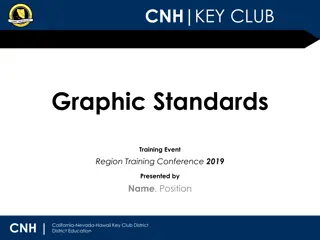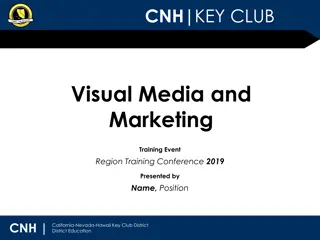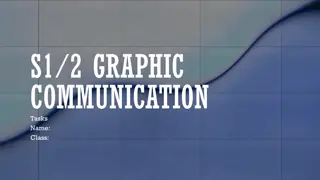Understanding Features of Graphic Novels through Analysis and Discussion
Explore the linguistic and visual features of graphic novels like "Persepolis" by discussing elements such as capitalization, multiple perspectives, paralinguistic features, and more. Analyze different narrative techniques, including dialogue, use of color, and differentiation between thoughts and speech. Engage in activities to identify and label these features to deepen comprehension.
Download Presentation

Please find below an Image/Link to download the presentation.
The content on the website is provided AS IS for your information and personal use only. It may not be sold, licensed, or shared on other websites without obtaining consent from the author. Download presentation by click this link. If you encounter any issues during the download, it is possible that the publisher has removed the file from their server.
E N D
Presentation Transcript
Persepolis A Graphic Novel
What do you expect from a graphic novel? Write down all the features, both linguistic and other (visual?) that you might expect to find in a graphic novel. If you have no idea, then think that they stem from comics, so just try to write down what language and visual features you might expect to find in a comic strip (The Beano; Superman; Spiderman; Asterix; Tin-Tin; Snoopy)
Share with a partner Discuss these with your partner and make a list together. Now turn over the page you have and see if you can spot and list any further features. As you do so, try to label these features if you can, with any linguistic terminology you have learnt thus far, for example: Hit him! is a command and an exclamative (because of the exclamation mark).
Share with class and add any more to your own list Capitalisation of writing Many exclamatives Differentiation between thoughts and speech. Multiple perspectives, depending on which characters is featured in the frame. Non-verbal frames to visually depict setting (therefore no verbal description necessary as the reader can see it).
Further features Multiple spoken dialogue. Loudness indicated with change of speech bubble to jagged edges. Paralinguistic features ie facial expressions take place of adverbs and attributors (ie she said sadly where she said is the attributor and sadly the adverb. Both these are simply shown in the fact of the character, visuals. Different size of frame, to indicate importance of the moment in the narrative.
More features Narrator s story in a block at top or bottom of frame (could be in first or third person narrative voice). Different states of consciousness easily depicted (dreams, thoughts, imaginings of a different life) through visuals. Sounds in setting depicted. Different use of colour (muted; garish) or not. Sense of a hero or super hero at centre of story. Genre: action or adventure. Often semantic field of violence or sense of violence being over-used. (Bang! Crash! Wallop!)
Watch first six minutes of film Divide class into pairs, then pairs into two halves of class. In pairs, one half of the class watch film and jot down all the features of Western and American culture they can see or hear. The other half, jot down all the features of Iranian culture they can see or hear. These could be things that are said by the characters, or written on the illustrations, or things that are seen by the viewer. 10 mins (six to watch; four to consolidate) Be prepared to feed these back to the class. Extension: label them with language features if possible ie Mahshid is a proper nouns an Iranian person s name.
Feed back and semantic fields A semantic field is a chain of words that together, create a certain group identity. For example: Dog, cat, snake, mouse create a semantic field of animals. Snake, fig leaf, apple, man and woman create a semantic field of the Garden of Eden in the Bible. The common noun snake is in both, but the semantic fields are very different. Look back at the collection of words you have in your lists; do they create any semantic fields that may help us to identify what the story may be about? 2 mins to look at discuss before feedback.
The story so far From the little you have seen, read and watched (or what you may already know), what themes may be emerging thus far from our study of the text? Contrast of Western ideas and Iranian Islamic Revolutionary ones. Voice of a young girl and her particular perspective on this. Sense of an autobiography told retrospectively. The sense of a repressive regime emerging and the day to day struggle of living in it.
Homework Look up the 20thcentury history of Iran and precis it into 10 points for the next lesson. Bring to the lesson.
The Twentieth Century, potted History of Iran Homework out. Give out my sheet of ten points of Iranian history and go through to check everyone understands terms, maps and ideological differences. Watch next 15 mins of film, broken down into 7 mins (6.13 to 13.35); 8 mins (13.35 to 21.30);
Watch the next 15 mins: The Story of Iran Around class give out following semantic fields for each person to look out for and jot down language or words in their area: Politics Religion Violence Child s language Feedback.
War with Iran and Iraq and the Cultural Revolution Watch the next 4 mins (21.30-25-50) Make a list of all the differences in their lives between how it was portrayed at the beginning of the film and how it is to live in Iran in 1980, under the new regime of The Cultural Revolution . Feedback.
The pages of text Hand out texts to all students. Keep these safe. As a class read through the Kim Wilde scene. Ascribe voices for: Mum, Dad, Marjane s spoken voice, Marjane s narrative voice, airport official, Iranian women. Read through. Write down your immediate impressions of the scene afterwards including links to anything we ve learnt so far. (3 mins) Be prepared to feed back your ideas to the class.
Posters In groups of three, you are going to be given a page of this scene on a sheet of sugar paper. You job is to identify as many language features as you can on your page, and making links between what the writer has used, the context of the piece, the genre of the piece and these language features. Make your poster as eye-catching and informative as possible, so we can use it as a learning tool up on the wall. You may use the computers to look up any items that you don t know, or references that you don t understand (Kim Wilde, Iron Maiden, for example).
Remember The difference between written and spoken language The language of the graphic novel The context of this novel The voice of the narrator Your glossaries: use them! Ask me for help any time. (25 mins?)
In groups Feedback to the class your findings, using as much linguistic and literary terminology as you can. Others annotate their own copies as they listen. Posters up on the wall.
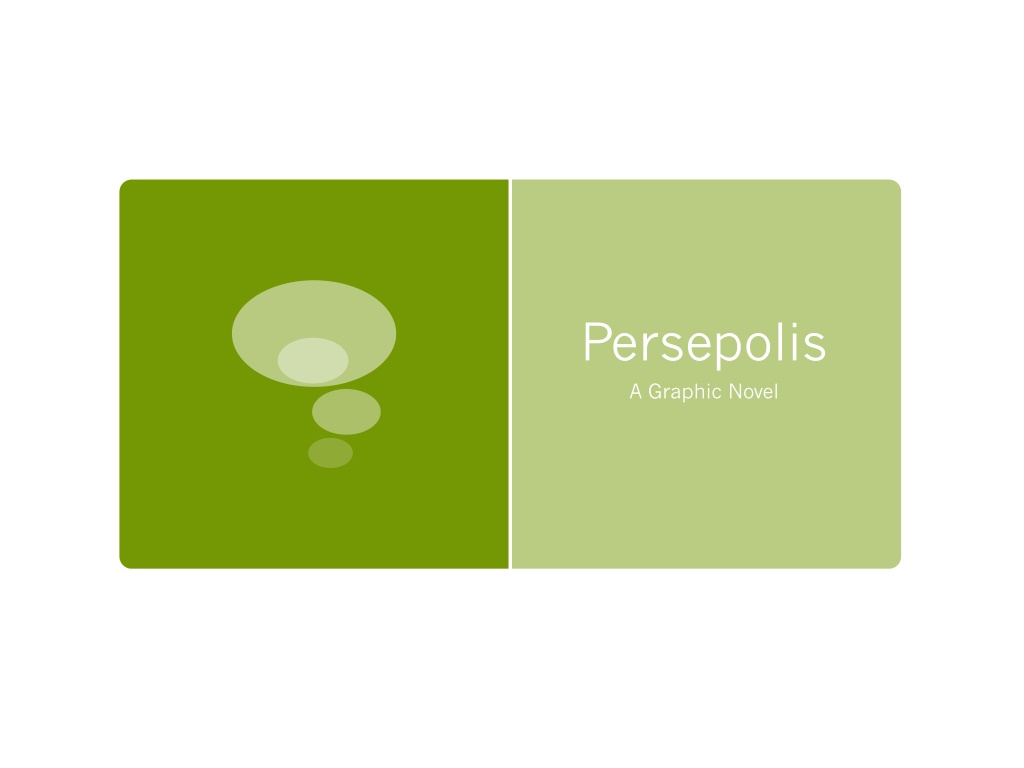
 undefined
undefined




